Related Research Articles

Manitoba is a province of Canada at the longitudinal centre of the country. It is Canada's fifth-most populous province, with a population of 1,342,153 as of 2021. Manitoba has a widely varied landscape, from arctic tundra and the Hudson Bay coastline in the north to dense boreal forest, large freshwater lakes, and prairie grassland in the central and southern regions.
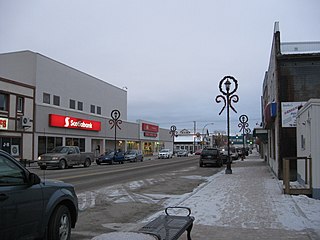
Flin Flon is a mining city, located on a correction line on the border of the Canadian provinces of Manitoba and Saskatchewan, with the majority of the city located within Manitoba. Residents thus travel southwest into Saskatchewan, and northeast into Manitoba. The city is incorporated in and is jointly administered by both provinces.

Winnipeg James Armstrong Richardson International Airport is an international airport located in Winnipeg, Manitoba, Canada. It is the seventh busiest airport in Canada by passenger traffic, serving 4,094,793 passengers in 2023, and the 7th busiest airport in Canada by aircraft movements. Winnipeg International Airport is a hub for Calm Air, Perimeter Airlines, and cargo airline Cargojet, also serving as a focus city for WestJet and an operating base for Flair Airlines. The airport is co-located with Canadian Forces Base Winnipeg, covering a total land area of 1,370 hectares.
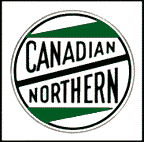
The Canadian Northern Railway (CNoR) was a historic Canadian transcontinental railway. At its 1923 merger into the Canadian National Railway, the CNoR owned a main line between Quebec City and Vancouver via Ottawa, Winnipeg, and Edmonton.
The National Transcontinental Railway (NTR) was a historic railway between Winnipeg and Moncton in Canada. Much of the line is now operated by the Canadian National Railway.

The Manitoba Hydro-Electric Board, operating as Manitoba Hydro, is the electric power and natural gas utility in the province of Manitoba, Canada. Founded in 1961, it is a provincial Crown Corporation, governed by the Manitoba Hydro-Electric Board and the Manitoba Hydro Act. Today the company operates 16 interconnected generating stations. It has more than 527,000 electric power customers and more than 263,000 natural gas customers. Since most of the electrical energy is provided by hydroelectric power, the utility has low electricity rates. Stations in Northern Manitoba are connected by a HVDC system, the Nelson River Bipole, to customers in the south. The internal staff are members of the Canadian Union of Public Employees Local 998 while the outside workers are members of the International Brotherhood of Electrical Workers Local 2034.

The Duluth, Winnipeg and Pacific Railway is a subsidiary railroad of Canadian National Railway (CN) operating in northern Minnesota, United States. A CN system-wide rebranding beginning in 1995 has seen the DWP logo and name largely replaced by its parent company. The DWP line is CN's connection between International Falls and Duluth, Minnesota, where the railroad connects to a short stretch of the former Duluth, Missabe and Iron Range Railway before following the former Wisconsin Central to Chicago, Illinois.

Northern Manitoba is a geographic and cultural region of the Canadian province of Manitoba. Originally encompassing a small square around the Red River Colony, the province was extended north to the 60th parallel in 1912. The region's specific boundaries vary, as "northern" communities are considered to share certain social and geographic characteristics, regardless of latitude.
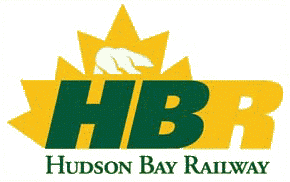
Hudson Bay Railway is a Canadian short line railway operating over 1,300 kilometres (810 mi) of track in northeastern Saskatchewan and northern Manitoba.
Emerson is an unincorporated community recognized as a local urban district in south central Manitoba, Canada, located within the Municipality of Emerson – Franklin. It has a population of 678 as of the 2016 Canada census.
Burlington Northern Santa Fe Manitoba is a Canadian subsidiary railroad of the BNSF Railway, which operates in Winnipeg, Manitoba.

The SS Keenora is a steamboat on Lake Winnipeg. The vessel began operations on Lake of the Woods in Ontario, where from she was transported to Winnipeg, Manitoba and rebuilt. Currently retired from service, Keenora is the centrepiece of collection at the Marine Museum of Manitoba in Selkirk, Manitoba.
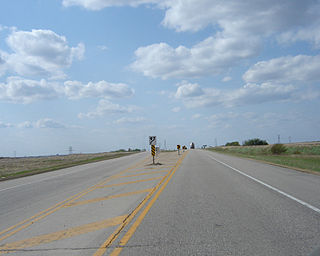
Highway 16 is a provincial highway in the Canadian province of Saskatchewan. It is the Saskatchewan section of the Yellowhead Highway, and also the Trans-Canada Highway Yellowhead section. The main purpose of this highway is to connect Saskatchewan with Canadian cities such as Edmonton and Winnipeg. The highway runs from the Alberta boundary in Lloydminster to the Manitoba boundary near Marchwell. Major cities it passes through are Saskatoon, North Battleford in the central part of the province, Yorkton in the far east and Lloydminster to the far west.

Winnipeg's North End is a large urban area located to the north and northwest of Downtown Winnipeg. It is bordered by the Red River on the east, the Canadian Pacific Railway (CPR) mainline on the south, the City of Winnipeg boundary on the west and Jefferson Avenue, Keewatin Street, Carruthers Avenue, McGregor Street and the lane between McAdam and Smithfield Avenues on the north. It is the northern section of the City of Winnipeg as it existed prior to the 1972 municipal amalgamation. Winnipeg's northern suburbs such as West Kildonan and Old Kildonan are not considered part of the North End. The CPR mainline and its Winnipeg yards, which are one of the largest railway yards in the world, act as a physical barrier between the North End and the rest of Winnipeg to the south. This has resulted in the North End remaining a very distinct and unique part of Winnipeg.

The Countess of Dufferin was the first steam locomotive to operate in the Canadian prairie provinces and is named after Hariot Hamilton-Temple-Blackwood, Countess of Dufferin, the wife of the Earl of Dufferin, a Governor General of Canada.
Winnipeg Junction is a ghost town in section 22 of Highland Grove Township in Clay County, Minnesota United States.

The Winnipeg Limited was an overnight named passenger train operated by the Great Northern Railway 457 miles (735 km) between St. Paul-Minneapolis and Winnipeg, Manitoba. It competed on the route with the overnight Winnipeger of the Minneapolis, St. Paul and Sault Ste. Marie Railway, and the Northern Pacific Railway's unnamed daytime passenger train. The service was truncated to run between Manitoba and Grand Forks after February 2, 1970.

The Boundary Trail Railway Company is a Canadian short line railway company operating in southern Manitoba. In 2009, the railway purchased 37 kilometres (23 mi) of operational railway linking Morden, Manitoba to the Binney Siding, as well as 89 kilometres (55 mi) of abandoned railway from Binney Siding to the Pembina Valley, and on to Holmfield. Since March 2016, it has also operated with trackage rights on Canadian Pacific Railway's La Riviere sub between Morden and Rosenfeld.
The Hudson Bay Railway (HBR) is a historic rail line in Manitoba, Canada, to the shore of Hudson Bay. The venture began as a line between Winnipeg in the south and Churchill, and/or Port Nelson, in the north. However, HBR came to describe the final section between The Pas and Churchill.
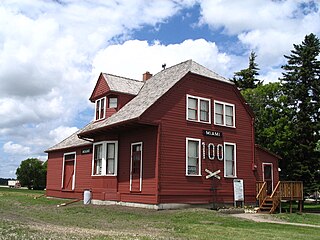
The Miami Railway Station is a former railway station that was built in Miami, Manitoba, by the Northern Pacific and Manitoba Railway Company in 1889. Designated as a National Historic Site of Canada in 1976, it is now a railway museum that operates during the summer. The museum is at the southern end of the village near the intersection of Highway 23 and Letain Street.
References
- ↑ "The Manitoba Great Northern Railway Company Incorporation Act". 1909-03-10. Retrieved 2006-06-30.